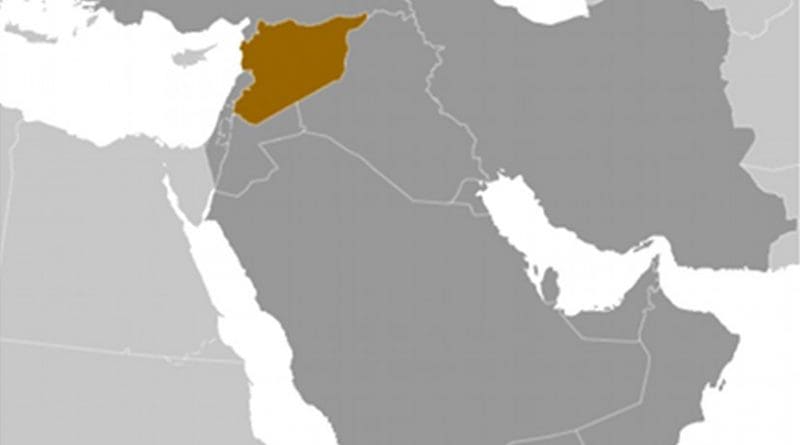Syria: Working From An Old Play Book? – OpEd
By MEI
By Wayne E. White
Developments in Syria have been growing more disturbing. The Assad regime seems to be reacting to the unrest as if it believes it can contain it with much the same approach used against the Syrian Muslim Brotherhood roughly 30 years ago, particularly during 1980-1982. Some have credited Tehran with coaching Damascus on how to contain its current popular challenge. But aside from tips on exploiting cell phones and social media activity to identify dissenters, and thereby undermining the opposition’s ability to exploit the internet, the tactics reportedly playing out militarily on the ground seem chillingly similar to those this regime used once before.
From 1979-1990, I was involved in coverage of Syria for the State Department’s Bureau of Intelligence and Research. During this time, I was able to follow in some detail the Syrian regime’s roughly five year struggle against the Muslim Brotherhood. In the weeks during which Hama was partly destroyed by regime heavy weapons in February 1982, I was responsible for all INR coverage of that repressive urban nightmare.
When Brotherhood-driven unrest rose to serious levels in Aleppo in 1980, a reinforced Syrian armored division surrounded and besieged the city with such effectiveness that the vast bulk of the populace opted to avoid a bloodbath and a crushing attack like that which would later smash much of the Brotherhood’s fighting capacity in Hama. A fearsome display of regime military power in the form of tanks and artillery was arrayed outside Aleppo for some weeks while security forces combed the city for suspected oppositionists. In the case of Hama, where far more Muslim Brotherhood cadres had gathered in 1982, the regime finally did opt to move in and crush the Brotherhood militarily after trying the same sort of powerful show of force around the city that had worked at Aleppo two years earlier.
On May 11, London Times correspondent Martin Fletcher, after some low-profile on-the-spot reconnaissance, attested to exceptionally large amounts of Syrian armor concentrated just outside Homs. Armored and mechanized units have similarly besieged other urban centers, but this particular concentration might be greater. It could be that the aging veterans of the struggle against the Muslim Brotherhood within the regime’s inner circle have convinced themselves and Bashar al-Assad that what worked before in smashing the Brotherhood also should work against the forces now challenging the regime – in spite of the larger number of outbreaks of unrest and defiance this time around.
Yet the center of gravity of active resistance back in 1980-1982, despite a number of sympathizers throughout Syria’s majority Sunni Arab community (especially outside Damascus), remained relatively confined to the ranks of the Brotherhood and its most ardent supporters. Consequently, a show of force outside Aleppo in 1980 could cause the bulk of the general populace in a major locality to back down en mass. Likewise, brutal military intervention in Hama when so many hard core cadres of the Brotherhood had gathered there to make a determined stand, could take out much of the opposition’s core in one fell swoop (and telegraph a chilling signal to potential challengers in other urban centers). This time around, however, the opposition seems more diverse and broader in societal terms. The Brotherhood was more violent then, but its popular depth probably was not nearly as substantial as that of today’s opposition.
Given the number of cities and towns having experienced significant unrest in the past two months, one would think the Assad regime would be aware that resort to more extreme measures than even those witnessed so far could generate still more instability on the national level and place even greater strain on rather stretched loyal military units attempting to contain it. One cannot exclude, however, that the regime remains hopeful that a massive show of military force — and perhaps even a bloody demonstration of its willingness to crack down with heightened ruthlessness in one particular hotbed of opposition — would stun Syria back to more manageable levels of dissent. Hopefully, such a scenario does not lie ahead, but the situation might be drifting closer to a bloodbath scenario given what could still be a frightened regime’s violent-minded (and possibly delusional) attachment to the exceedingly brutal tactics of another time.
Wayne White, a scholar at the Middle East Institute in Washington DC, is the former deputy director of the State Department’s intelligence office for the Near East and South Asia. Assertions and opinions in this Policy Insight are solely those of the above-mentioned author(s) and do not necessarily reflect the views of the Middle East Institute, which expressly does not take positions on Middle East policy.

